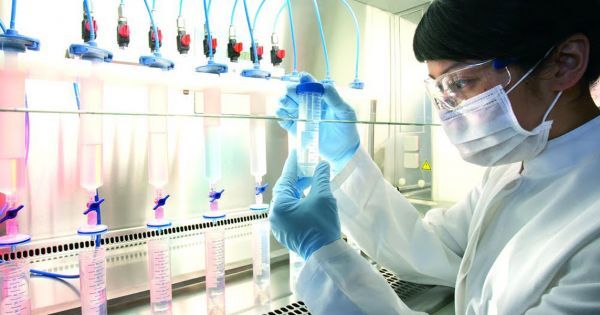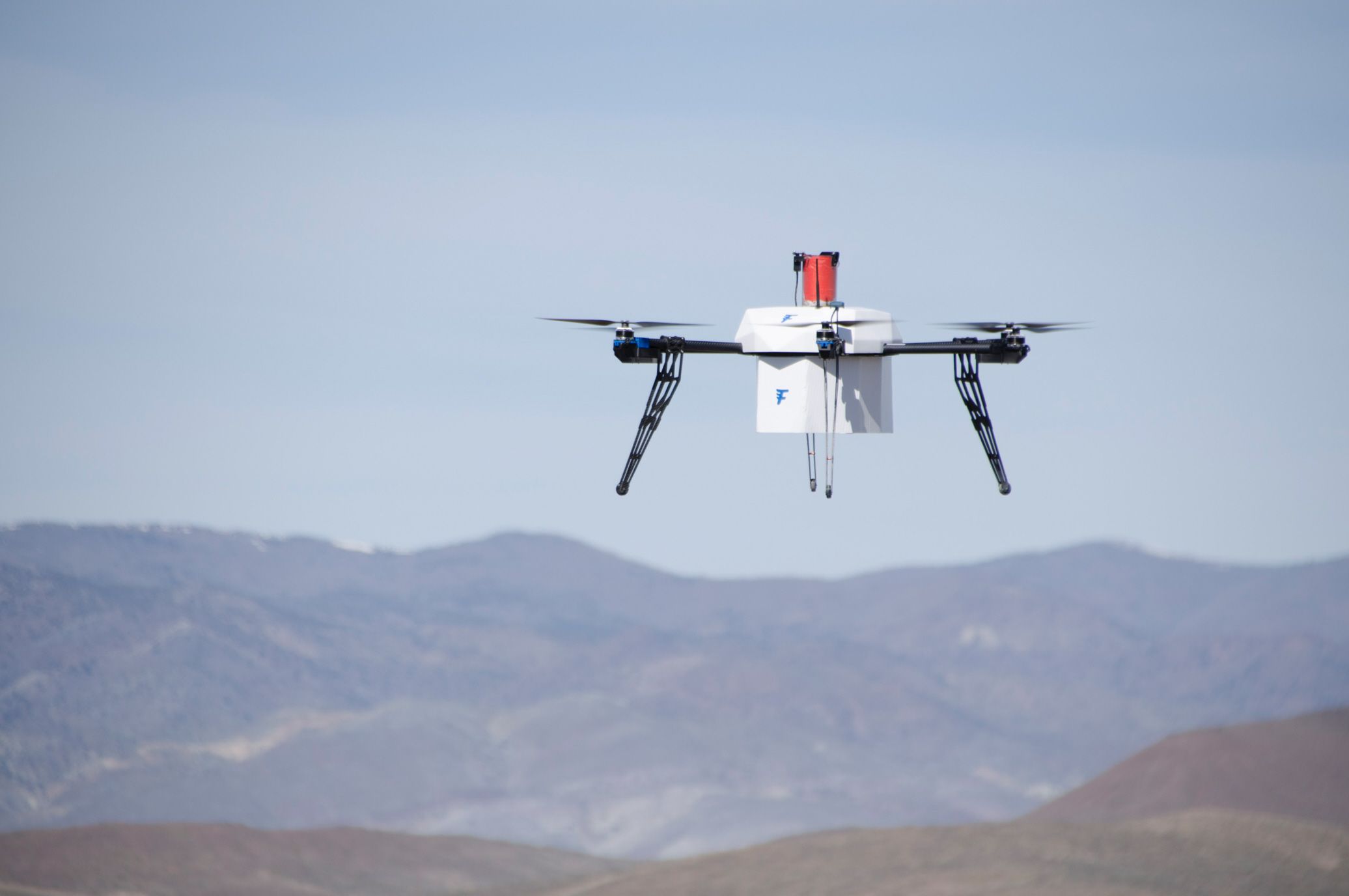Page 11297
Mar 27, 2016
Chinese Scientists Say They Have the Ability To Clone Humans
Posted by Julius Garcia in category: biotech/medical

Chinese company Boyalife Group is set to start cloning cows later this year, but they say that they have the technology to do even more.
The Boyalife Group, responsible for building the world’s largest cloning factory, says that it already has the technology needed for human replication, and that it is only holding back due to public perception.
Continue reading “Chinese Scientists Say They Have the Ability To Clone Humans” »
Mar 27, 2016
Machine learning will create a new computing architecture that can do things “better than humans.”
Posted by Shailesh Prasad in categories: computing, robotics/AI
Mar 27, 2016
Why We Need a Transhumanism Movement
Posted by Zoltan Istvan in categories: life extension, transhumanism


A crowd gathers to hear about transhumanism and life extension technologies — Photo by Roen Horn
Recently I was asked to be a part of a debate for British think-tank Demos and their quarterly magazine. In the debate, The University of Sheffield Professor Richard Jones and I faced off over the merits and faults of transhumanism. You can read the entire debate here, but I wanted to focus on one part of it, where Jones questions why there’s a need for a transhumanism movement at all.
Mar 27, 2016
Heat-assisted storage could give you 10x more space on your computer’s drive
Posted by Shailesh Prasad in categories: computing, media & arts
If you’re always running out of room for photos, videos, and music on your laptop, then science might have the answer. Using a laser to write data to magnetic storage, researchers have been able to increase the potential data storage capacity of hard drives by as much as 10 times — a process konwn as heat-assisted magnetic recording (HAMR).
Our computers write, read, and store information by controlling and detecting whether tiny regions of the disk are magnetised or not. This magnetic state corresponds to either a “1” or a “0” in the binary code — known as a bit — and our files are stored across thousands (or millions) of these bits at once. So if we want more space, we need to find a way to shrink those magnetic regions — which are made up of magnetic grains. And that’s where this new development comes in.
As Gizmodo reports, the new technique relies on shrinking the size of the magnetic grains used to store data, while minimising the interference with surrounding grains, and the researchers have now done that more effectively than ever before by using a precise laser alongside a magnetic field.
Continue reading “Heat-assisted storage could give you 10x more space on your computer’s drive” »
Mar 27, 2016
The First Urban Drone Delivery Just Happened In Nevada
Posted by Shailesh Prasad in category: drones
Mar 27, 2016
Alphabet’s ‘Moonshots’ Head Astro Teller: Fear Of AI And Robots Is Wildly Overblown
Posted by Klaus Baldauf in categories: bioengineering, computing, genetics, robotics/AI
(Photo credit: AP Photo/Jack Plunkett, File)
Astro Teller is tired of the paranoia surrounding artificial intelligence and robotics. The famous computer scientist’s sensitivity around the topic may be understandable considering he bears the brunt of some of that skepticism as the head of X, the Alphabet (and formerly Google) moonshot factory working on many of the company’s futuristic AI and robotics projects.
This past weekend, Teller, whose official title is “captain of moonshots,” took to the stage at the inaugural Silicon Valley Comic Con hoping to dispel some of these misconceptions around AI. His physician wife, Danielle Teller, presented alongside him on some of the fear mongering associated with genetic engineering in humans. After their presentation, the Tellers sat down with FORBES to go deeper on the issue to explain what they hoped to accomplish with their talk.
Mar 26, 2016
Space Propulsion « MSNW LLC
Posted by Andreas Matt in categories: physics, space travel
The EMPT thruster, funded by NASA, is a 1 kW-class RMF thruster, operates on the same physics principles as the ELF thruster. This device, less than 4 inches in diameter, has proven that pulsed inductive technolgoies can be succesfully miniaturized. Indeed, this thruster has demonstrated operation from 0.5 to 5 Joules, as well as the first pulsed inductive steady state operation. The EMPT has demonstrated greater than 1E8 continuous plasma discharges.
Mar 26, 2016
Space Innovation Congress
Posted by Karen Hurst in categories: biotech/medical, food, government, information science, satellites
The is a Space Technology Conference and Exhibition, taking place in London on 7–8 April 2016. It is set to showcase the most cutting edge technologies and uses of Space Technology providing insight from over 50 speakers sharing their unparalleled industry knowledge and real-life experiences.
This year’s Space Innovation Congress will be highlighting the most innovative advancements in Space technology and will look at how these are being applied to many industry verticals from farming to banking, and the practical case studies that are coming out of these projects.
With user cases with dedicated tracks covering the entire Space exploration and Earth observation ecosystems: Satellites, Big data, Crop monitoring, Space debris, Maritime surveillance, Space weather and its impact on banking systems, Biomedical, Commercial space collaboration and Telecoms.
Mar 26, 2016
Artificial Intelligence Writes Novel, Nearly Wins Japan’s Unique Literary Prize
Posted by Aleksandar Vukovic in categories: computing, robotics/AI
A novel written by artificial intelligence was a finalist in Japan’s Hoshi Shinichi Literary Award. The award is named after Hoshi Shinichi, a Japanese science fiction author whose books include The Whimsical Robot and Greetings from Outer Space. The unique contest accepts submissions from humans and machines, and judges for the prize, now in its third year, weren’t told which novels were written by humans and which were penned by human-AI teams. This year was the first time the committee received submissions written by AI programs.
The AI novel is called The Day A Computer Writes A Novel, or Konpyuta ga shosetsu wo kaku hi in Japanese. It was co-written by Hishoshi Matsubara, a professor of computer science, along with his team at Future University Hakodate in Japan. According to the LA Times, their AI wrote four books, of which one made it past the first round of the prize. It was one of 1450 submissions, 11 of which were written with the help of AI programs.
According to reports, 80% of the novel had human involvement, as Matsubara and his team did the research for the novel, decided on the plot and developed the characters. The novel’s text was written entirely by the AI. The Professor’s team entered words and phrases from a sample novel into a computer in order for the AI to construct a new novel similar to it, Slate reports.
Continue reading “Artificial Intelligence Writes Novel, Nearly Wins Japan’s Unique Literary Prize” »















